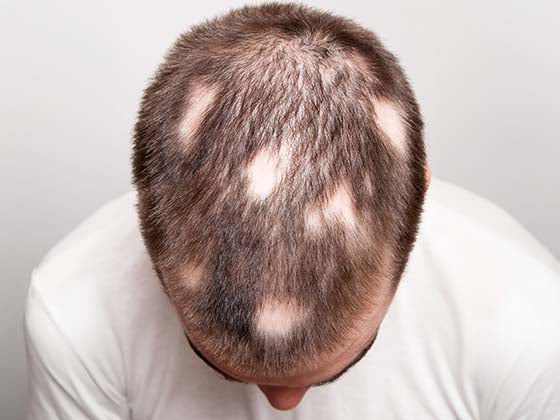Oils play an important part in keeping hair healthy, lustrous, and nourished. However, not all oils are made equal, and knowing the difference between penetrating and sealing oils will help you make the best decision for your hair type and needs. In this blog, we will look at penetrating versus sealing hair oils.
Understanding Hair Oils: Penetrating vs. Sealing

Hair oils are crucial for keeping hair healthy, hydrated, and shining, but they do not all work the same way. When choosing hair oils, it is critical to grasp the distinction between penetrating and sealing oils. These two types of oils have distinct benefits and can be utilized in various ways, depending on your hair type and requirements.
-
Penetrating oils are excellent for deeply moisturizing, strengthening, and nourishing hair from inside. They're ideal for dry, damaged, curled, or porous hair, which requires interior moisture and restoration.
-
Sealing oils are great for locking in moisture, preventing frizz, and protecting your hair from the weather. These oils are ideal for coarse, thick, or curly hair, particularly if you want to enhance shine and decrease flyaways.
What Are Penetrating Oils & How Do They Work?

Penetrating oils are oils that can penetrate deep into the hair shaft, providing hydration, nourishment, and repair from within. These oils are especially good for hair that is dry, damaged, or lacks internal hydration since they replenish moisture, strengthen hair, and promote overall hair health. In a nutshell, they work as follows:
-
Absorption: Penetrating oils are absorbed into the hair shaft due to their tiny molecules, which can pass through the cuticle. This allows them to work on the inner structure of the hair, resulting in profound hydration.
-
Moisture retention: These oils penetrate the hair and help restore moisture balance, particularly in dry or porous hair. They aid to retain moisture, keeping the hair from becoming dry or brittle.
-
Strengthening: Penetrating oils contain vitamins, minerals, and fatty acids that nourish the hair's internal structure. This creates stronger, more elastic hair, which reduces breakage and split ends.
-
Repair: Because penetrating oils supply moisture and nutrients deep into the hair, they can help repair damaged hair over time, minimizing the appearance of split ends and avoiding future damage.
The Role of Sealing Oils in Hair Care

Incorporating sealing oils into your hair care routine helps to lock in moisture, prevent frizz, and protect hair from the elements. Sealing oils, while not as deeply moisturizing as penetrating oils, are crucial for maintaining your hair's overall health, smoothness, and shine. Understanding when and how to apply sealing oils will help you maximize your hair care regimen and keep your hair looking and feeling great.
Key Differences Between Penetrating and Sealing Oils

The main differences are provided below.
-
Molecule size: Penetrating oils contain smaller molecules that can penetrate deep into the hair shaft, providing moisture and nourishment from within. On the other hand, sealing oils contain larger molecules that do not penetrate the hair shaft but instead sit on top, forming a protective barrier.
-
Function: Penetrating oils hydrate and nourish the hair from within by penetrating the hair shaft, restoring moisture, strengthening the hair, and repairing any damage. On the other hand, sealing oils primarily lock in moisture and protect the hair by sealing the cuticle, preventing water loss, and preventing damage from external elements such as humidity, pollutants, and UV rays.
-
Moisture impact: Penetrating oils moisturize the hair by penetrating the hair shaft, making them ideal for dry, damaged, or porous hair that requires internal hydration. On the other hand, sealing oils lock in moisture that is already in the hair, preventing it from escaping. They’re used to maintain hydration rather than provide it.
-
Types of oils: Examples of penetrating oils include coconut oil, argan oil, jojoba oil, and olive oil. These oils have a light to medium viscosity and contain fatty acids and other nutrients that can penetrate the hair shaft. On the other hand, sealing oils include castor oil, grapeseed oil, sweet almond oil, and avocado oil. These oils are typically thicker or have a higher molecular weight, making them more effective at creating a barrier on the hair's surface.
-
Best for: Penetrating oils are ideal for dry, damaged, or porous hair that requires deep hydration and nourishment. On the other hand, Sealing oils are ideal for healthy hair that requires moisture retention, frizz control, and protection from environmental factors.
-
Application time: Penetrating oils are typically applied before a moisturizing product or conditioner and allowed to absorb for an extended period of time. They are commonly used as pre-shampoo treatments or deep conditioning oils. On the other hand, sealing oils are typically used to seal in moisture after it has been added (for example, after using a penetrating oil or conditioner). They can also be used as a finishing touch to smooth and add shine.
-
Effect on hair texture: Penetrating oils can increase hair strength and elasticity, making it less prone to breakage. They gradually aid in the repair of internal damage. On the other hand, sealing oils smooth the cuticle, reducing frizz and increasing shine. They do not alter the internal structure of the hair, but do improve its appearance and manageability.
-
Common uses: Penetrating oils are used for deep treatment, hydration, and repair. They can be applied to the hair for an extended period of time (even overnight) or used in conjunction with regular washing. On the other hand, Sealing Oils are used for styling, finishing, and frizz control. They are frequently used as a finishing touch after washing or conditioning to keep moisture locked in.
Benefits of Using the Right Hair Oil

Using the appropriate hair oil provides numerous benefits, including improved moisture retention and hair strength, as well as scalp health and protection against environmental harm. Whether you're battling with dryness, frizz, or breakage, the correct oil may significantly improve the health and appearance of your hair. Understanding your hair type and demands allows you to choose an oil that will help you achieve your desired hair results, making it softer, shinier, and more manageable over time.
Hydration & Moisture Retention

Hydration and moisture retention are vital for healthy, vibrant hair. While these terms are frequently used interchangeably, they refer to various aspects of maintaining healthy hair. Let's look at the fundamental differences and how to attain them for healthier hair.
-
Hydration: Hydration is the process of infusing water into your hair. Water is your hair's primary source of hydration, keeping it silky, supple, and elastic. Hydrated hair feels moist and plump, with a lower chance of brittleness and breakage.
-
Hydrated hair appears shinier, feels softer, and is less prone to dryness.
-
Dehydrated hair, on the other hand, feels rough, dull, and brittle. It is more prone to damage, breakage, and frizz.
-
Moisture retention: Moisture retention refers to your hair's capacity to hang on to existing moisture and prevent it from evaporating. It entails forming a barrier around the hair shaft to retain moisture in and prevent external forces such as humidity or heat from taking it away. Even if your hair is hydrated, it will quickly lose its hydration and become dry. Sealing moisture is critical for keeping hair silky and hydrated over time.
Strengthening Hair Strands & Reducing Breakage

Hair breakage is a common problem for many people, and it can be caused by a multitude of factors including over-styling, harsh chemicals, environmental damage, or a lack of basic maintenance. By combining strengthening treatments, moisturizing products, and preventative measures, you can reduce breakage and encourage healthier, stronger hair. Hydration, nourishment, and gentler hair care procedures will help to restore elasticity and avoid further damage. Strengthening hair strands is a gradual process, but with patience and the appropriate practice, you may obtain more durable and breakage-free hair.
Enhancing Scalp Health for Hair Growth

A healthy scalp is critical for encouraging strong, healthy hair development. By adopting scalp care activities such as frequent cleansing, moisturizing, massage, and the use of natural oils, you may improve circulation, nourish your hair follicles, and create an ideal environment for hair development. Maintaining a balanced diet, reducing stress, and avoiding harsh chemicals will all help to promote healthy scalp and hair growth. Healthy hair begins with the scalp—so take care of it, and it will reward you with stronger, more vivid hair.
How to Choose the Best Oil for Your Hair Type

Choosing the appropriate oil for your hair type is critical to keeping healthy, strong hair. Understanding your hair's specific needs—hydration, strength, gloss, or growth—will assist you in selecting the ideal oil. Experiment with various oils, remembering that a little goes a long way. With constant application, the correct oil may revolutionize your hair care routine and give you the healthy, attractive hair you want.
Identifying Your Hair Porosity & Oil Needs

Identifying your hair porosity is essential for knowing your hair's demands and selecting the best oils to keep it healthy and hydrated. Low porosity hair benefits from lightweight oils that enter without clogging, but medium porosity hair can take a wide range of oils for hydration and shine. High porosity hair needs thicker oils that can seal in moisture and prevent more damage. Understanding your hair porosity will allow you to choose the optimal oils and hair care methods to improve the health and appearance of your hair.
Lightweight vs. Heavy Oils – Which One is Right for You?

Lightweight oils
Lightweight oils have a thinner consistency and are easily absorbed into the hair without leaving a greasy behind. These oils are ideal for hair types that require moisture and shine but cannot take heavier products that weigh their hair down.
-
Lightweight oils absorb quickly into the hair without remaining on the surface.
-
The hair has no greasy or heavy aftereffects from these oils.
-
Lightweight oils are ideal for fine, straight, or oily hair types because they do not add weight to the hair.
-
They moisturize and nourish the hair without using too much product.
Heavy oils
Heavy oils are thicker and have a richer consistency. These oils are ideal for delivering deep moisture, sealing the hair cuticle, and preventing dryness, particularly for thick, dry, or frizzy hair. They aid to maintain hydration, improve hair structure, and protect against damage.
-
Heavy oils absorb slowly and may remain on the hair's surface for longer periods of time.
-
These oils have a richer, thicker texture, making them ideal for sealing moisture into the hair.
-
Heavy oils are best suited to coarse, curly, or porous hair that requires intense moisture and protection.
-
They provide long-term moisture and nourishment, making them ideal for dry, damaged hair.
Customizing Your Hair Oiling Routine for Maximum Results

Adapting your hair oiling routine to your hair type, texture, porosity, and demands can help you achieve the greatest results. Understanding how your hair reacts to various oils and treatments allows you to develop a routine that combats dryness, frizz, and damage while also promoting hair health. Oiling is a versatile and effective approach to maintain healthy, attractive hair, whether you're deep conditioning it, adding shine, or treating the scalp. Customize your routine and reap the advantages of healthy, vivid hair.
Final Thoughts on Penetrating & Sealing Oils

The main lesson is that the ideal hair oiling routine usually includes a combination of penetrating and sealing oils. Penetrating oils provide deep nourishment to your hair, while sealing oils lock in moisture and keep it appearing smooth, lustrous, and healthy. Understanding your hair's specific demands and porosity will help you to tailor your routine, ensuring that you apply the proper oils at the right time. Whether you need deep moisture, scalp health benefits, or frizz control, selecting the proper oils can make all the difference in having vibrant, healthy hair.
















